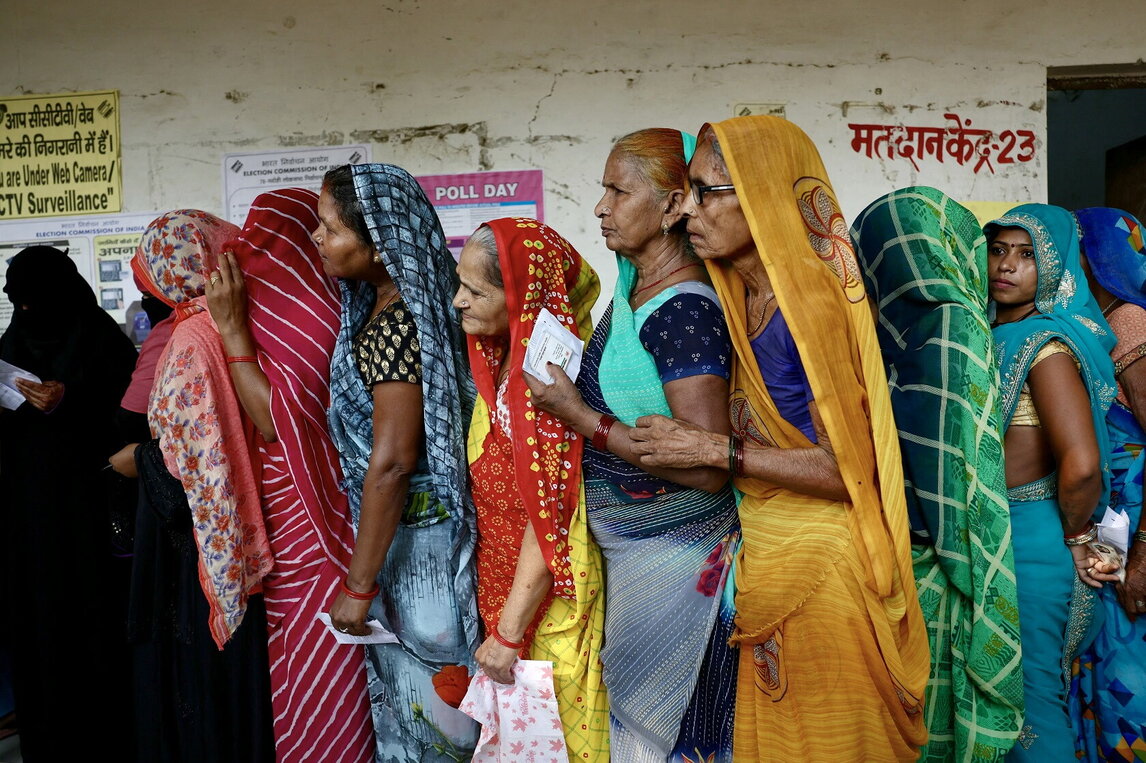
The new India
Signs of change
In a partial victory for Narendra Modi, his BJP lost its absolute majority in India’s parliament. The country returns to coalition politics, with a stronger opposition and democratic institutions beginning to regain some independence
9 minO
n June 4, 2024, the Indian political system was rocked by an earthquake. Prime Minister Narendra Modi’s party, the Bharatiya Janata Party (BJP), failed to secure an absolute majority in the lower house, as it had in the previous two elections in 2014 and 2019. When the vote counting concluded, the BJP had 240 seats—32 shy of a majority. Together with its allies in the National Democratic Alliance (NDA), the prime minister fell short of 293 seats, well short of the 400 he had set as a target during the campaign.
The 2024 elections were significant because they returned India’s party system to "normalcy", if by normalcy we mean the 25 years (1989-2014) when the country was governed by coalitions rather than individual parties. In 2014, the BJP defied all expectations and predictions, winning 282 seats and securing the freedom to govern alone. Five years later, again surpassing even the most optimistic forecasts, the party reached 303 seats. In a country with nearly a billion voters, speaking dozens of languages, practicing all major religions, and divided among thousands of caste groups, the BJP’s results were extraordinary, reflecting broad consensus and immense popularity, particularly for the prime minister himself.
A bitter victory
In the spring of 2024, however, something shifted. While the BJP won the election and formed the government, the party suffered a significant political setback for several reasons. First, the BJP—and all pre-election polls—had expected a large majority. The campaign had been almost entirely centered on the prime minister’s popularity, so the narrow victory took on a personal dimension for Modi. Second, the opposition had been severely constrained. Not only did Modi’s party benefit from more electoral contributions than all other parties combined—thanks in part to a government-backed election financing law later ruled unconstitutional—but opposition leaders had been relentlessly targeted by investigative agencies, which opened cases against numerous political figures. During Modi’s decade as prime minister, nearly 95 percent of investigations into politicians were directed at opposition members, many of whom saw charges dropped once they switched to the BJP.
T
hird, India’s media system had weakened considerably over the past decade, partly due to the support large business groups (which control most newspapers and TV stations) have given to the BJP, and partly due to government investigations targeting independent journalists and media outlets. Fourth, key institutions like the Supreme Court and the Electoral Commission have repeatedly been accused of losing their independence and protecting the government in critical cases.
In other words, Indian democracy has experienced significant erosion over the past decade, pushing the country closer to the ranks of hybrid regimes—those that blur the lines between democracy and authoritarianism. The Swedish V-Dem Institute, for instance, classified India as an ‘electoral autocracy’ in 2020, a system where free elections exist alongside oppression, control, and the erosion of civil liberties, making it incompatible with the norms of a mature democracy.
The election result, while a bittersweet victory for the BJP, had significant consequences for the policymaking process. For the first time since Modi took office in October 2001 as Chief Minister of Gujarat, the prime minister will no longer have an absolute majority in parliament. He will now have to consider the demands of his allies, particularly the two major parties that secure his government: the Janata Dal (Secular) of Bihar and the Telugu Desam Party of Andhra Pradesh.
What’s more, the BJP will have to contend with a much stronger opposition, energized by an election result that far exceeded expectations. The Indian National Congress, for example, doubled its seat count to 99. With the support of the two dozen parties that make up the Indian National Developmental Inclusive Alliance (INDIA), the opposition—largely focused on an anti-Modi campaign—secured 234 seats.

The moderating influence of the allies
In the early months of the new government, despite the BJP’s efforts to project continuity in political action—starting with the cabinet members, nearly all of whom were retained from the outgoing administration—there were clear signs of change. In August, for instance, the government—apparently at the request of one of its allies—submitted a controversial bill to regulate Muslim charitable institutions to a bicameral parliamentary committee. This was a notable shift, as in the previous ten years, the BJP had bypassed parliamentary committees, preferring direct approval without consulting other parliamentary groups.
A
few weeks later, the government withdrew a controversial bill that critics argued would have further increased government control over digital media. Soon after, the government was forced to backtrack on a civil service reform proposal that failed to protect the interests of the low castes, the core electoral base of the Janata Dal (Secular).
In other words, the necessary confrontation with government allies—who do not share the BJP’s ultranationalist and distinctly pro-Hindu agenda—has, at least temporarily, limited the executive’s legislative discretion.
This stands in contrast to previous years, when major reforms were implemented with minimal parliamentary involvement.
Additionally, some key institutions appear to have gained more room to maneuver. For example, the Supreme Court ordered the release of Arvind Kejriwal, the former Chief Minister of Delhi, who had been arrested just weeks before the spring 2024 elections, allowing him to campaign in the capital’s state elections scheduled for early 2025. In July, the same court struck down a measure in three BJP-led states that would have required traders to display a sign with their name—essentially identifying Muslim traders and making it easier for Hindu extremist groups to boycott their businesses. Some news media also seem to have gained more space to publish content critical of the government.
Although weakened compared to the previous two terms, the BJP remains the dominant party in the political system, and Modi continues to enjoy significant popularity. A recent round of elections in three key states—Haryana, Maharashtra, and Jharkhand—confirmed this dominance. The BJP performed better than expected in Haryana, where it had underperformed in the spring, and secured a decisive victory in Maharashtra (the state of Mumbai), where the BJP-led alliance won an overwhelming majority.
The results demoralized the opposition, starting with Congress. More importantly, however, they weakened another potential source of trouble for the prime minister: the factions within the BJP that had been sidelined during his previous terms. These factions had hoped to regain influence after the party’s disappointing performance in the general election.
A good thing for the country
The 2024 national and state elections have placed a wounded but still-standing prime minister at the helm of the country, leading a party that remains central to the political system, both at the center and on much of the periphery. However, the need to govern in a more collegial manner will limit the government’s influence, especially on controversial issues. This is likely beneficial for India as a whole, particularly from an economic standpoint. Domestic and international investors will benefit from a more predictable and less rigid policymaking process. Additionally, the two states where the BJP’s key allies come from—Bihar and Andhra Pradesh—will receive, as they have in these early months, significant economic benefits, including both public investment and government support in attracting domestic and foreign capital.

